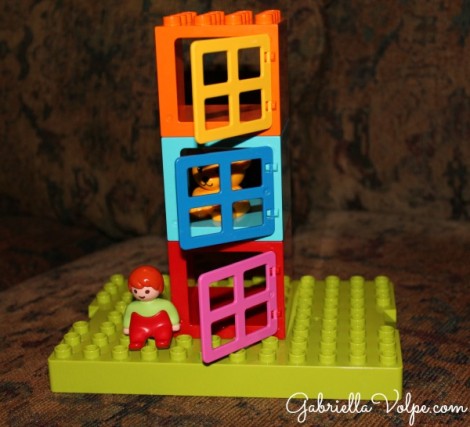When educating a neurodivergent or disabled child, the tendency is to lower our expectations. Here, I offer a different mindset for planning for a neurodivergent or disabled child. Rather than lowering your expectations, meet the learner where they’re at.
Meeting a child where they’re at means assessing their strengths and focusing on those for educational purposes. It might be tricky to get into that mind-frame especially since so many interventions over the years have aimed to improve the child’s weaknesses and challenges.
When you focus on what the child can do well, you can help them build a skill set they can use for life.
Unfortunately, as a society, we gravitate toward the things we can fix about a person.
For example:
- “He’s great at writing, but he can’t speak well, so let’s have him join a social group to build his speaking techniques.”
- “She’s a fabulous designer, but her math skills are lacking, so let’s get her a math tutor twice a week.”
- “They’re an amazing athlete, but can’t read, so let’s keep drilling those sight words before they join a track team.”
While all of those skills are important to address, we often make the mistake of coaching a child through their weaknesses rather than honing their strengths.
Consider this:
- What would happen if the writing skills were tapped into more than their speaking proficiency?
- What would it look like if their design aptitude were fostered more than their math exercises?
- What if you allowed the athlete to train and loosened up on cranking out sight words?
By focusing on the strengths, you are helping the learner:
- Build self-confidence and self-esteem
- Develop skills that could become a future career path
- Become autonomous
- See themselves as capable (because they are)
- Help others see them as capable (because they are)
When we constantly remediate difficulties, we lose sight of the learning within education.
Wikipedia has a great definition of education:
Education in its general sense is a form of learning in which the knowledge, skills, and habits of a group of people are transferred from one generation to the next through teaching, training, or research. Education frequently takes place under the guidance of others, but may also be autodidactic. Any experience that has a formative effect on the way one thinks, feels, or acts may be considered educational.
Except for the part about one generation to the next (because education also happens within a generation), education is not defined as hammering endlessly on things we do not know. Instead, education is a transfer of information and skills through guidance, practice, research, and lived experiences.
What does this look like for a neurodivergent or disabled children?
Rather than focusing on performance or results (which tend to be superficial anyway), the idea is to follow and encourage the progress the child is making from where they’re presently at developmentally.
Progress is the journey in comparison to where the child first started, performance is the outcome in comparison to others. Stay away from performance-focused outcomes.
An example:
When working on a new skill with my son, I ask:
- What is he already great at doing?
- How does he thrive best?
My son learns best through repetition and verbal routines. To teach him a new skill, we work on building a new routine that he will be comfortable with–even if the skill doesn’t necessarily require/come with specific word patterns. I usually set him up with the routine in advance (through play), so that when he’s finally at the task, he can recognize what to do, even if the medium/materials are different from the modelling.
For instance, this week, we worked on lacing hearts with ribbons. I knew that this was going to be challenging for him because of his fine motor struggles. I not only adapted the materials to better suit his hand skills, but I also thought to use the song “In and Out the Window” while he threaded the ribbon through the holes. I set it up so that there were many opportunities to sing that song throughout the week. We went in and out a “window” (a hole or a space): we sang it through his play tunnel, as he “walked” (with support) through two chairs, and we also played with his toys (balls, figurines) going in and out actual windows!

We played “in and out the window” with his figurines starting with the top window, then the middle, then the lower one–as though threading the toy through the windows.
By the time he got to the lacing cards, my son was familiar with the song, and he understood that something goes through a space while we sing that song. He was intrigued as we pulled the ribbon through the spaces in the cards. The skill was practiced for a very short amount of time before he lost interest and squirmed away. It was a starting point and it was progress for him.

This free printable lacing card is from Karen Cox at PreKinders. I adapted it by punching large heart holes instead of standard hole punches and using large ribbon instead of yarn. You don’t see it pictured, but I affixed a laundry pin to the top of the ribbon to make it easier to manipulate the ribbon while weaving it in and out of the holes. It was also laminated ahead of time to get a sturdier hold on the cards.
In comparison to other children his age (performance), you would say the skill wasn’t even tackled since he stayed with it for only about a minute. In comparison to himself (progress), however, you would see that he went from never having held a lacing card and ribbon, to holding the lacing card in one hand and briefly holding the ribbon in the other.
What I didn’t do:
I could have started with the lacing card and insisted that my son thread that ribbon an endless amount of times because it was a skill he needed to practice. I could have done that all day long until he mastered it. Most likely, I would have been met with resistance, a meltdown, and possibly a shut-down to the activity altogether (making it almost impossible to have him attempt the task again in the future).
I didn’t focus on the fact that he couldn’t do it even though I knew it might be a challenge. If I had drilled the skill endlessly, it’s likely that his self-esteem would have suffered as well.
How to think of progress versus performance:
If a child is at point A, meet them there. Don’t hang around point B or C and wave over to them to join you.
Instead, nourish the stage the child is at in their learning. Foster the activities. Listen to their interests. Learn about their life vision for themselves.
Support their every step.
Cheerlead.
Encourage.
Celebrate.
Walk right beside them no matter how long it takes.
Enjoy the journey.
If you guide a learner from where they’re at, you will both begin to see point B more clearly from this vantage point. The frustrations will lessen for both of you, the progress will be staggering.
Related articles:
- Tools for Meeting A Leaner Where They’re At: Using Educational Continua Instead of Standards
- Planning the Home Education Year – Part 10 – Assessments and Evaluations
If you enjoyed this article, I invite you to subscribe to read more.
"*" indicates required fields

0 Comments